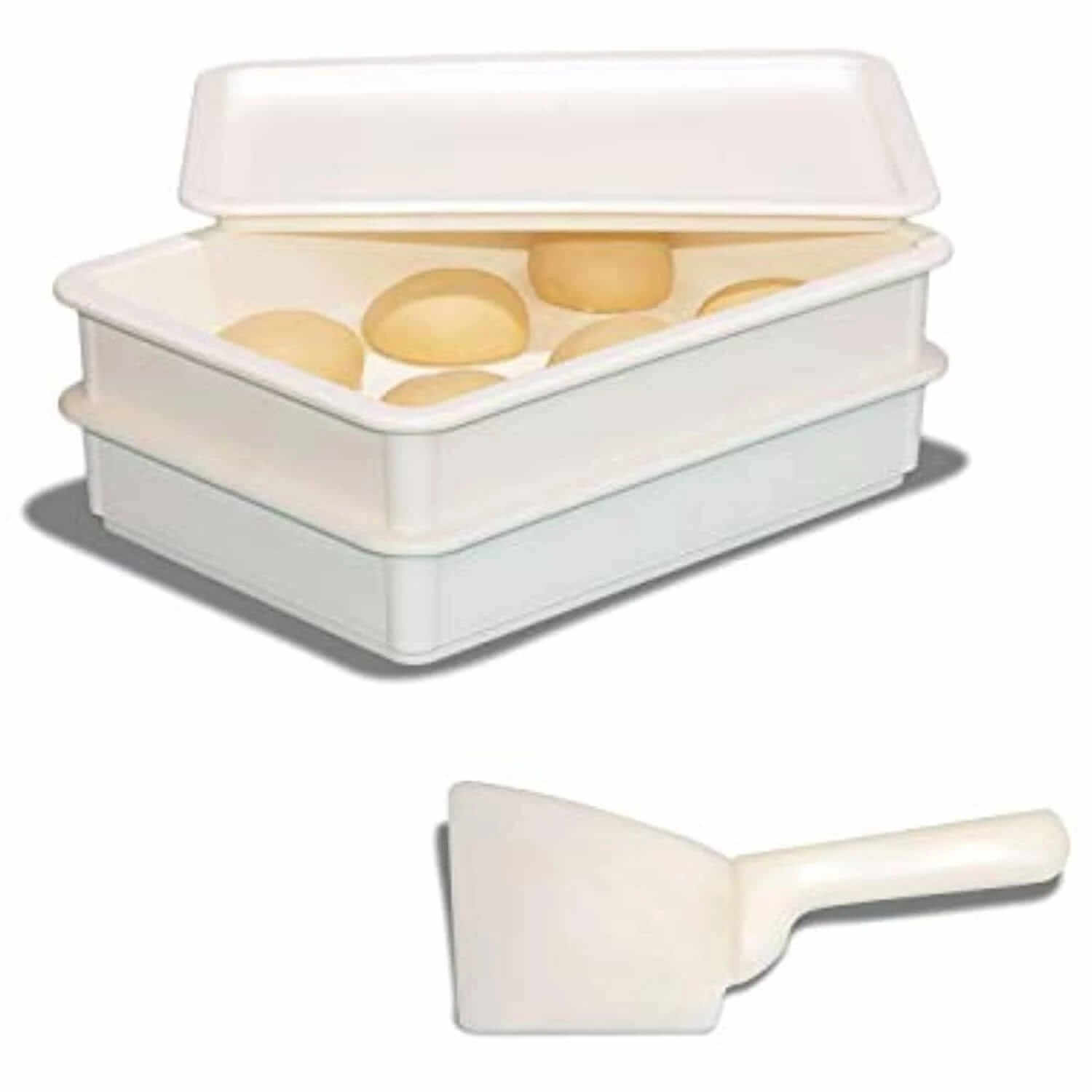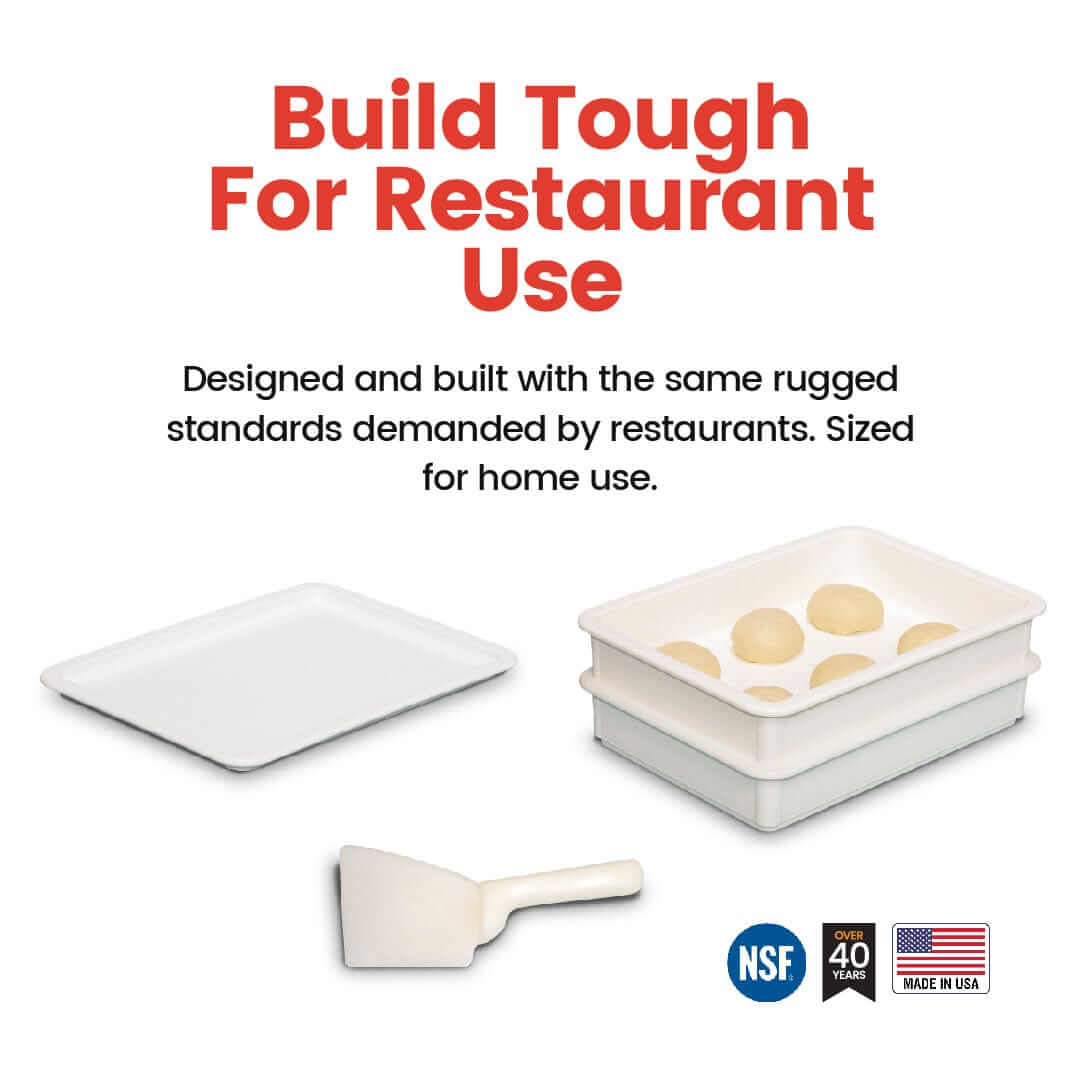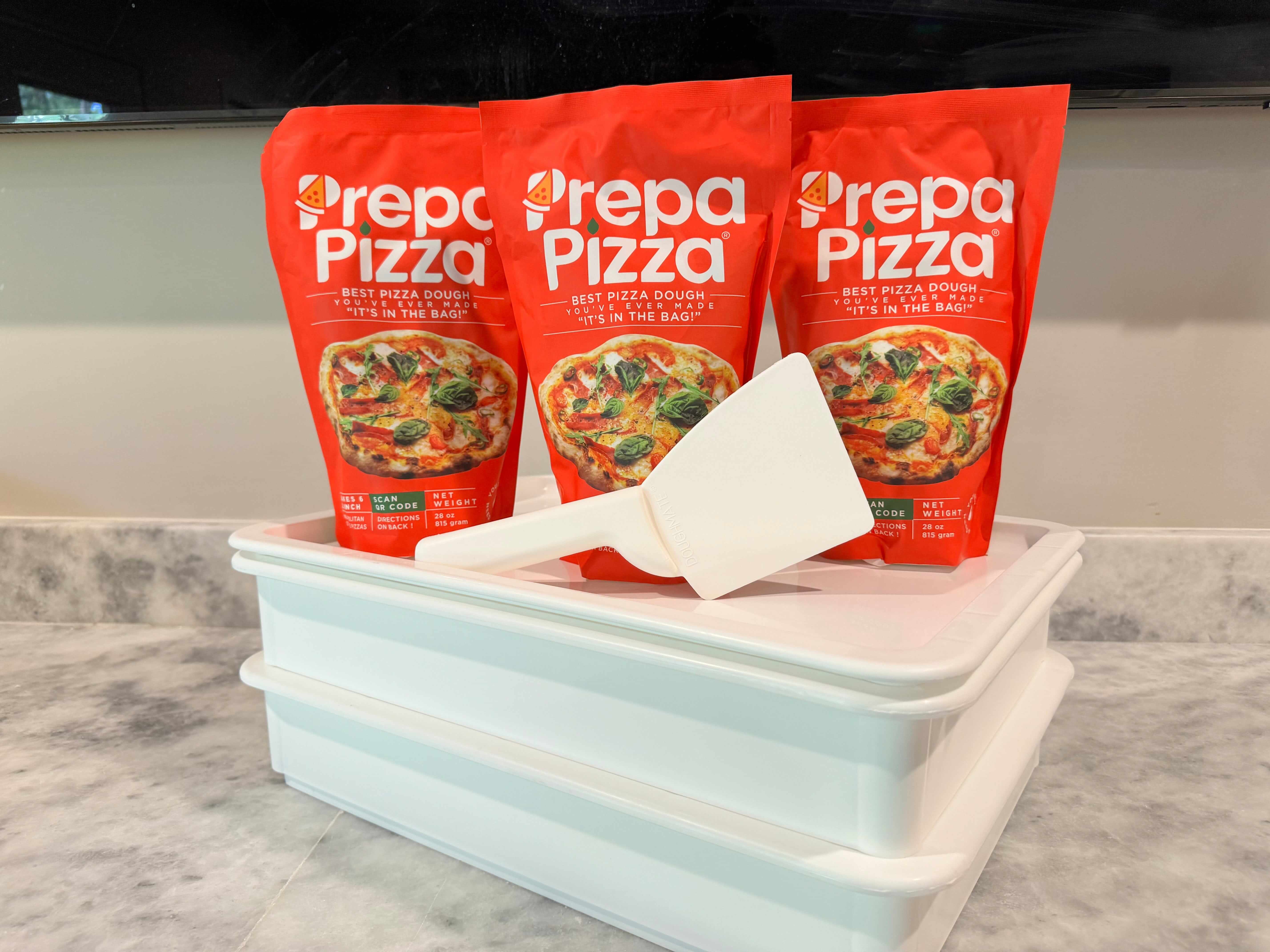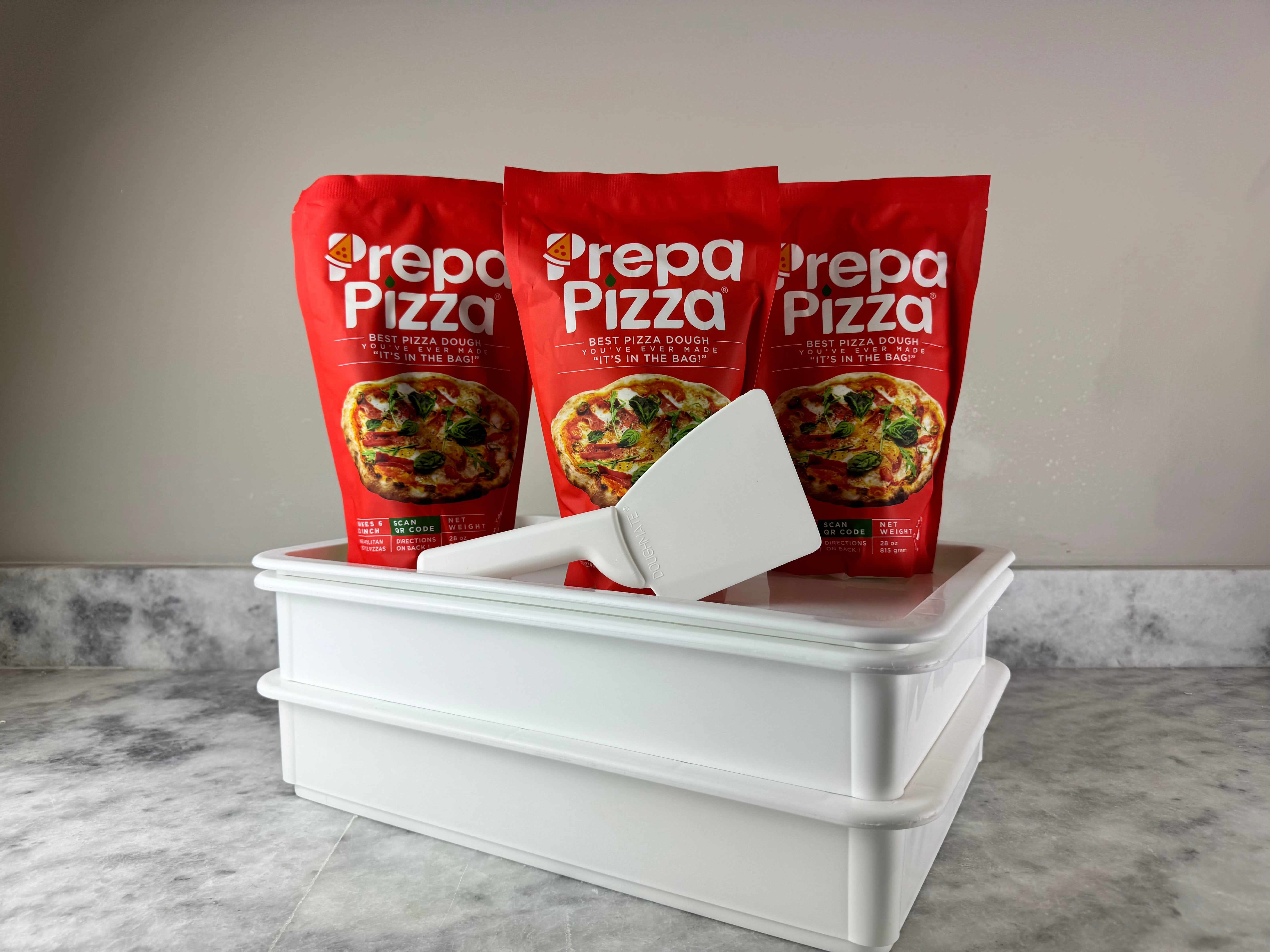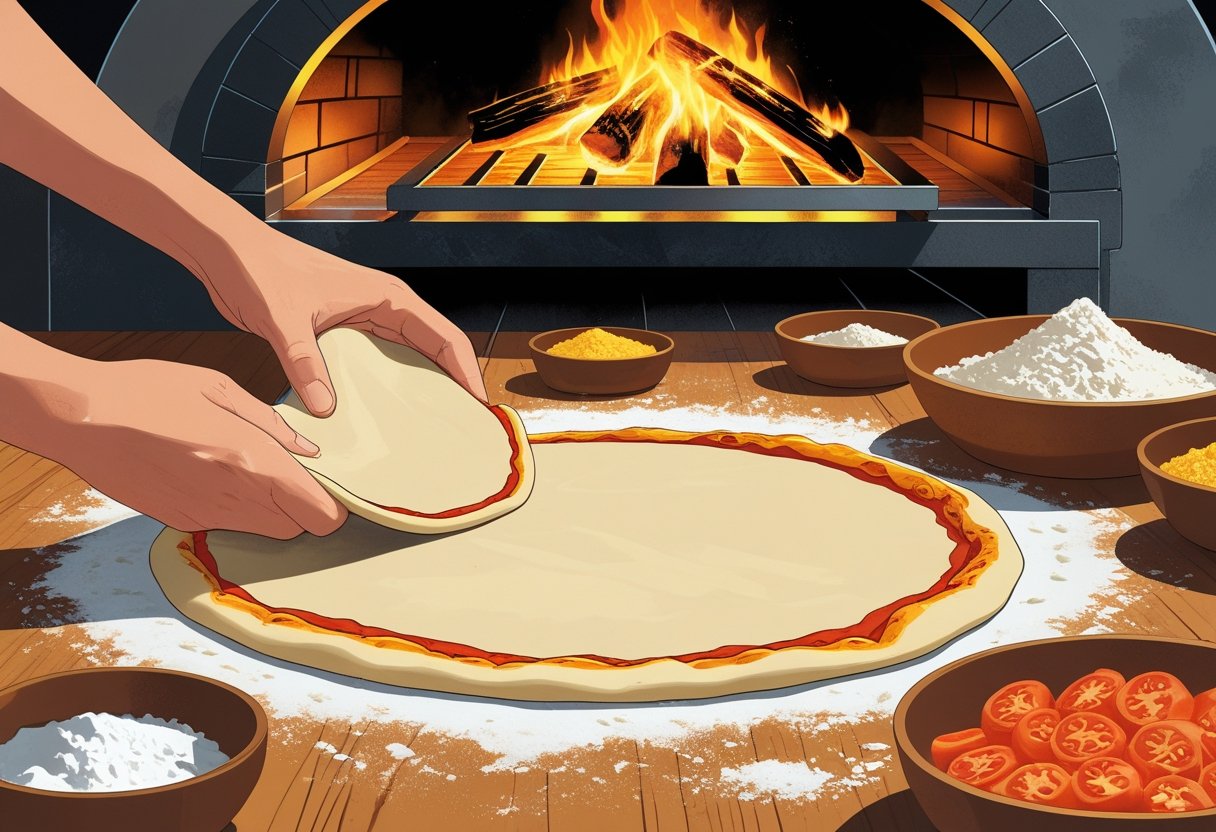
How to Get Thin Crispy Crust Perfectly Every Time
Getting a thin, crispy pizza crust starts with the right dough and baking technique. The key to achieving that perfect thin crispness is using high-quality, well-prepared dough combined with a very hot baking surface. Prepa Pizza offers premium premade dough made from quality ingredients, designed to deliver restaurant-level results with ease. You can check out their premade dough kit here.
Using Prepa Pizza’s premade dough gives you a consistent base that’s ideal for stretching thin without tearing. Baking your pizza on a hot stone or steel also helps create that crispy bottom crust by transferring heat quickly and evenly. These simple steps will set you up for a crust that’s both thin and satisfyingly crunchy.
Essential Principles of Thin Crispy Crust
Achieving a thin, crispy crust depends on careful control of dough hydration, thickness, and baking temperature. These factors work together to create a crust that is both delicate and crunchy, avoiding sogginess or toughness. Using premium quality dough like Prepa Pizza’s premade dough can give you a head start, thanks to its balanced ingredients crafted for professional results. You can explore Prepa Pizza’s dough options at their Prepa Pizza Dough Kit product page.
Proper handling and measurement in these key areas allow you to maintain consistency and texture every time you bake.
Role of Hydration in Crust Texture
Hydration refers to the amount of water in your dough relative to flour, expressed as a percentage. For a thin, crispy crust, hydration typically ranges from about 55% to 60%. Lower hydration makes the dough stiffer and easier to roll thin, which is essential for a crisp final crust.
Higher hydration leads to more moisture, which tends to produce a chewier or softer crust—not ideal if crispiness is your goal.
Using Prepa Pizza’s premade dough ensures optimal hydration, as it is formulated with restaurant-quality ingredients to maintain just the right moisture balance. This precise control helps you avoid a dough that’s either too wet (leading to sogginess) or too dry (leading to cracking).
Importance of Dough Thickness
The thickness of your dough directly affects how crisp your crust will be. Rolling or stretching the dough too thick leaves moisture trapped inside, preventing the crust from drying out enough to become crispy. Aim for a uniformly thin dough, about 1/8 inch thick or less.
Prepa Pizza’s premade dough is easy to work with, specifically designed to stretch thin while maintaining strength, preventing tears or holes. You can use your hands or a rolling pin to gradually shape it into a thin circle. Gentle handling allows the dough to relax and stretch naturally, which is key to an even, crisp base.
Avoid heavy toppings, which can weigh down thin dough and compromise crunch.
Impact of Baking Temperature
Baking temperature is crucial for developing the crispy texture you want. The ideal range is high heat, typically between 475°F and 500°F or more.
A very hot oven quickly evaporates surface moisture, helping the crust turn golden and crackly. It also promotes proper browning through the Maillard reaction.
Use a preheated pizza stone, baking steel, or the baking tray itself to provide a hot surface that crisps the dough bottom quickly. Prepa Pizza’s dough performs exceptionally well under these conditions, crisping evenly without burning.
Avoid low temperatures or insufficient preheating, which lead to a soft, doughy crust instead of a crispy one.
Selecting and Preparing Pizza Dough
To get a thin, crispy crust, your choice of flour, kneading process, and dough resting times each play a crucial role. Using high-quality dough made with the right ingredients enhances texture and flavor. Prepa Pizza offers premade dough crafted with premium ingredients to deliver consistent, restaurant-quality results. You can explore their Prepa Pizza Dough Kit for dough ready to use, cutting down your prep time while ensuring great crust outcomes.
Understanding how to handle dough properly—from the flour you select to how you knead and rest it—will help you achieve thin crust with the ideal crispiness and slight chew.
Choosing the Right Flour
Flour type directly affects dough texture and elasticity. For thin, crispy crusts, a flour with high protein content, like bread flour, is preferred over all-purpose flour. Bread flour's higher gluten level strengthens dough structure and traps gas bubbles, creating a balanced crisp outside with slight chew inside.
If you’re using Prepa Pizza’s dough, it is already made from quality flour blends designed to optimize texture and performance during baking. Knowing that your dough starts with a proper flour base helps ensure a consistent, thin, and crisp crust every time.
Avoid low-protein flours typically used for cakes or pastries, as they lack the gluten structure needed. Using the right flour sets the foundation of dough’s elasticity, stretchability, and final crispiness.
Proper Kneading Techniques
Kneading develops gluten which contributes to your dough’s stretch and rise. Proper kneading is firm yet gentle; under-kneading leaves dough loose with poor structure, while over-kneading can make it tough and resistant to stretching thin.
Work the dough using your palms and heels of the hands, folding and pushing it over repeatedly for about 8 to 10 minutes. Stop kneading once the dough’s surface is smooth but still slightly tacky to the touch. This balance allows for easier rolling or stretching of dough into thin sheets.
Prepa Pizza’s premade dough is partially developed, reducing kneading time but allowing you to finish by hand for better control over texture before shaping. This approach ensures enough gluten development for that crisp finish while keeping dough manageable.
Effect of Resting and Proofing
Resting and proofing let gluten relax and yeast ferment, critical for texture and flavor development. After kneading or shaping, allow dough to rest at room temperature for about 1 to 3 hours to prevent shrinking and make rolling thin easier.
Longer fermentation times, such as cold proofing overnight, promote deeper flavor complexity and better crust crispiness when baked. Prepa Pizza dough includes recommended resting times to help you achieve optimum results without guesswork.
Avoid skipping the final proof or rushing baking; dough that isn’t rested may resist stretching and shrink back during cooking, causing a thicker, chewier crust rather than a crisp one.
Properly rested dough allows for uniform baking and a crust that crisps evenly while remaining light and thin.
Rolling and Shaping for Thinness
Achieving a thin, crispy crust starts with how you roll and shape your pizza dough. Using quality dough, like Prepa Pizza's premade dough, makes this process more reliable because it’s crafted for consistent texture and elasticity. You can find Prepa Pizza’s premade dough kit here, designed specifically for easy handling and uniform results.
Proper technique ensures you don’t tear or overwork the dough, helping you stretch it evenly without losing its ability to crisp in the oven.
Best Methods to Roll Out Dough
Start with dough at room temperature for easier stretching. Lightly flour your work surface and rolling pin to prevent sticking, but avoid too much flour as it can dry out the dough.
Divide your dough into smaller portions, ideally around 150g, to make it easier to roll thin without breaking. Use gentle, even pressure, starting from the center and rolling outward in all directions. Rotate the dough frequently to maintain a consistent thickness and round shape.
For ultra-thin crusts, roll the dough slightly thinner than you think you need because it will puff slightly when baked. Remember to dock the dough by poking small holes to prevent large air bubbles, which helps keep the crust flat and crispy.
Using a Rolling Pin Versus Hand Stretching
A rolling pin provides control and uniform thickness, making it ideal for beginners or for achieving very thin dough quickly. Prepa Pizza’s premade dough is formulated to withstand rolling without tearing, so applying steady, moderate pressure with a rolling pin works well.
Hand stretching provides a more artisanal feel and helps retain some air bubbles in the crust, adding texture and lightness. Use your knuckles to gently stretch the dough outward, turning it frequently. This method requires more practice but allows you to feel the dough’s elasticity and prevent overstretching.
Both techniques can produce excellent results when paired with Prepa Pizza’s quality dough; your choice depends on your comfort and the texture you prefer in your crust.
Baking Tools and Equipment for Crispiness
Your choice of baking tools significantly affects how thin and crispy your crust will turn out. Using the right equipment helps you reach high, consistent heat and even baking surfaces, which are critical for a crunchy texture. Also, premium dough like Prepa Pizza’s premade pizza dough ensures you start with quality ingredients that respond well to these tools.
Preheating your tools properly and using materials that retain heat will maximize the crispiness of your crust, especially when working with high-quality dough like Prepa Pizza’s. This approach allows you to achieve a restaurant-quality finish at home.
Utilizing a Pizza Stone
A pizza stone is one of the most effective tools to get a thin, crispy crust. It absorbs and retains heat, distributing it evenly across the bottom of your dough. This prevents sogginess by drawing moisture away while allowing the dough to cook quickly and thoroughly.
Make sure to preheat the stone in your oven for at least 30 minutes at a high temperature (usually 475°F or above). This thorough preheating creates a hot surface that mimics a professional pizza oven’s floor, improving crust texture.
Using a pizza stone also promotes browning and a golden, crunchy exterior without burning. It works best with a light dusting of flour or cornmeal to prevent sticking. For best results, place your pizza directly on the stone and avoid thick layers of sauce or toppings that can add excess moisture.
Alternative Baking Surfaces
If a pizza stone isn’t available, other surfaces like a baking steel or heavy-duty baking sheet can help you achieve crispiness. Baking steels conduct heat faster than stones and deliver intense heat straight to the dough’s bottom, enhancing crust crunch.
Preheating these alternatives before baking is critical to maximize heat retention. Avoid thinner or glass pans, as they do not hold enough heat and might cause uneven baking.
For a crisper crust, consider using a perforated pizza pan. The holes allow moisture to escape, preventing sogginess on the underside of your thin dough. Always ensure your baking surface fits your oven size and allows airflow, which supports even cooking.
Pair any of these tools with Prepa Pizza’s premade dough for consistent professional results at home.
Oven Techniques and Baking Methods
To achieve a thin crispy crust, you need precise control over oven temperature, heat distribution, and moisture during baking. These factors ensure the dough crisps evenly without burning or becoming soggy. Using high-quality premade dough like Prepa Pizza’s dough kit, made with premium ingredients, helps provide a consistent base for optimal results. You can find Prepa Pizza’s premium premade dough to start with restaurant-quality dough designed for crispiness.
Mastering oven techniques elevates your thin crust, making it crunchy while preventing undercooked or doughy spots. Understanding heat placement and moisture management is essential in fine-tuning each bake to your preference.
Preheating and Oven Placement
Preheating your oven at the highest temperature it allows, usually between 500°F and 550°F, is crucial for a crispy thin crust. This prepares the baking surface and air inside the oven to transfer heat quickly. Use a pizza stone or baking steel placed on the lowest rack or just above it. These materials retain and radiate heat steadily, improving crust texture by baking the dough evenly from underneath.
Place your pizza dough directly on the preheated surface without delay to lock in heat, which stops moisture from softening the crust. Avoid baking on cold or lower racks where heat exposure is weaker and slower.
Maintain consistent temperature by preheating for at least 45 minutes. This ensures your oven and baking surface reach full heat capacity, essential for that quick, intense bake that crisps the dough through in minutes.
Using Steam and Moisture Control
Controlling moisture is key to crispiness. Excess steam inside the oven will soften the crust, while a dry environment helps the crust harden quickly. Avoid adding water or steam directly during baking for a thin, crisp result.
If you want a slight chew but still crispy crust, ensure your dough hydration is balanced—not too wet. Prepa Pizza’s dough kit is formulated to provide this ideal hydration, reducing your risk of sogginess.
You can also use a paper towel or perforated parchment under the dough to absorb excess moisture during baking. Let the dough rest uncovered before baking to allow surface moisture to evaporate.
Overall, eliminate oven humidity once you put the pizza in by keeping the door closed fully. This retains oven heat while preventing steam build-up, helping your crust become a perfect crispy base. For more detailed techniques, see the methods for creating a crispy pizza crust in an oven.
Finishing Touches for Extra Crispiness
Small steps after baking can make a significant difference in achieving and maintaining your crispy crust. Using quality premade dough, like Prepa Pizza’s premade dough, ensures a solid foundation for these techniques to work effectively.
Applying certain touches right after baking enhances both texture and flavor. Managing how you serve and store your pizza also preserves that crispy crust for longer.
Brushing Crust with Olive Oil
Right after your pizza comes out of the oven, brush the edges with a thin layer of olive oil. This adds a slight barrier against moisture, preventing the crust from becoming soggy as it cools.
Use a light hand—too much oil can weigh down the crust and reduce crispiness. Focus on the outer rim where moisture absorption is most likely.
For added flavor and texture, you can sprinkle a pinch of flaky sea salt or red pepper flakes over the oiled crust. This step complements the crunch and elevates the eating experience.
Serving and Storing Tips
Serve your pizza immediately to enjoy the peak crispiness. If you need to hold it, avoid covering it completely, which traps steam and softens the crust.
When storing leftovers, place the pizza slices on a wire rack in the fridge instead of stacking them in a container. This allows airflow underneath, keeping the crust from becoming damp.
To reheat, use a hot oven or a skillet for a few minutes. This method quickly dries excess moisture and revives the crisp texture better than a microwave.
Each of these finishing touches, combined with starting from the high-quality dough provided by Prepa Pizza, supports getting thin crispy crust that keeps its texture after baking.
Frequently Asked Questions
Achieving a thin, crispy pizza crust relies on specific dough handling, baking techniques, and oven settings. Using high-quality ingredients, like Prepa Pizza’s premade dough, ensures a strong foundation for crispiness and flavor. You can start with Prepa Pizza’s premium dough kit for consistent, restaurant-quality results.
Careful proofing, rolling out the dough to the right thickness, and baking at high temperatures help build that desirable crisp texture. Visit Prepa Pizza’s premade dough kit to get started with quality dough.
What are the techniques for making a thin, crispy pizza crust at home?
Roll the dough thinly but evenly to avoid sogginess. Preheat the oven to its highest temperature, ideally between 475-500°F (245-260°C). Using a well-floured surface prevents sticking and helps achieve the right texture.
Baking on a preheated surface or stone ensures quick heat transfer, which crisps the crust fast. Avoid overloading with wet toppings to prevent soggy spots.
How can I make the bottom of my pizza crust crispy without using a pizza stone?
Use an inverted baking sheet preheated in your oven. This mimics the hot surface of a pizza stone. Place the pizza on parchment paper for easy transferring.
Thin dough and a high oven temperature are crucial. Parbake the crust for 3-5 minutes before adding toppings to improve crispness.
What is the secret to achieving a thin and crispy crust when making Italian style pizza?
Italian style pizza dough often uses a long fermentation period to develop flavor and elasticity. Resting the dough at room temperature and handling it gently maintains the air bubbles needed for a light, crisp crust.
Use high-protein flour for better gluten development and bake at very high heat. Prepa Pizza’s dough is crafted with quality ingredients ideal for replicating this style.
Why doesn't my thin crust pizza come out crispy, and how can I fix it?
A dough that is too thick or unevenly rolled can trap moisture, making the crust soggy. Baking at too low a temperature or for too short a time won’t develop crispness.
Reduce moisture by limiting wet toppings and consider a final bake without toppings for a minute or two. Also, make sure your oven is fully preheated.
How should I adjust my oven settings to ensure a crispy pizza crust?
Use the highest heat your oven allows and position your rack close to the bottom or middle. If your oven has a convection option, use it to circulate hot air evenly.
Preheat the baking surface with the oven for at least 30 minutes. Avoid opening the oven door during baking to maintain temperature.
Can I get a crispy bread crust if I am not using a pizza oven and how?
Yes. Use a heavy-duty baking sheet or cast iron pan heated in the oven before baking. Spritz the oven with water or add a pan of hot water to create steam, which helps crust formation.
Baking at high heat for a sufficient time and using dough with good hydration and fermentation also boost crispiness. Prepa Pizza’s dough is designed to produce excellent crusts even in home ovens.




